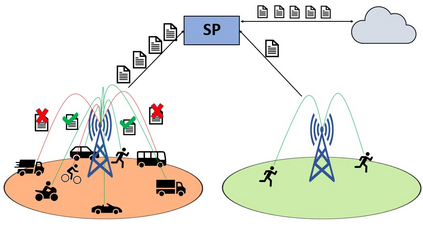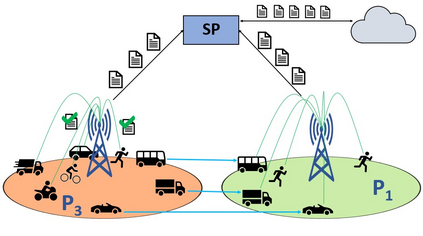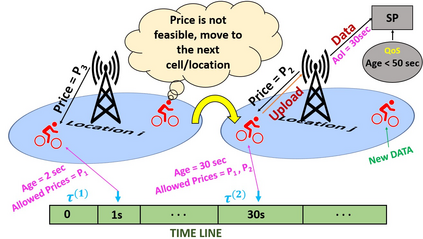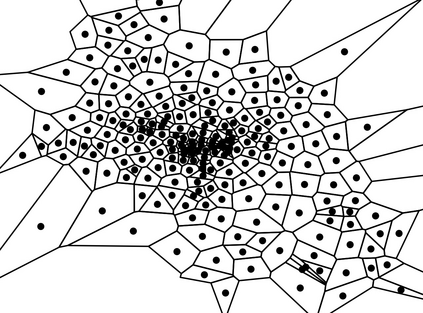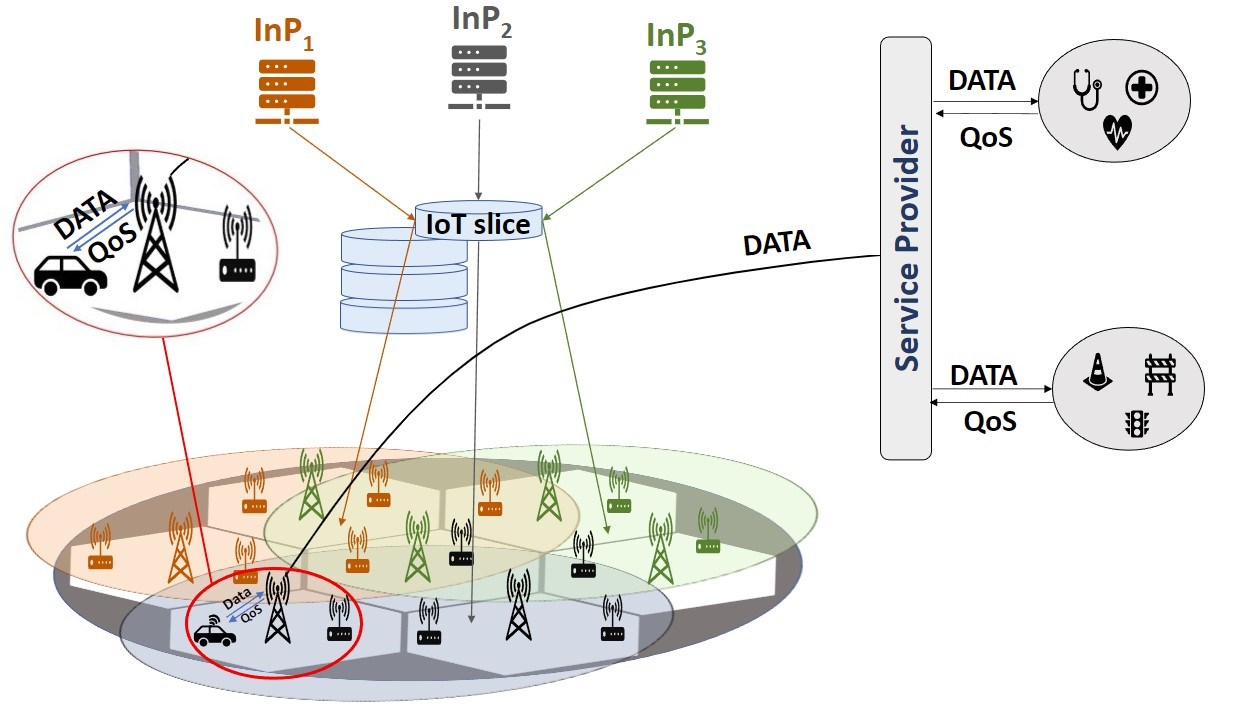The widespread adoption of 5G cellular technology will evolve as one of the major drivers for the growth of IoT-based applications. In this paper, we consider a Service Provider (SP) that launches a smart city service based on IoT data readings: in order to serve IoT data collected across different locations, the SP dynamically negotiates and rescales bandwidth and service functions. 5G network slicing functions are key to lease an appropriate amount of resources over heterogeneous access technologies and different site types. Also, different infrastructure providers will charge slicing service depending on specific access technology supported across sites and IoT data collection patterns. We introduce a pricing mechanism based on Age of Information (AoI) to reduce the cost of SPs. It provides incentives for devices to smooth traffic by shifting part of the traffic load from highly congested and more expensive locations to lesser charged ones, while meeting QoS requirements of the IoT service. The proposed optimal pricing scheme comprises a two-stage decision process, where the SP determines the pricing of each location and devices schedule uploads of collected data based on the optimal uploading policy. Simulations show that the SP attains consistent cost reductions tuning the trade-off between slicing costs and the AoI of uploaded IoT data.
翻译:广泛采用5G蜂窝技术将逐渐成为推动基于IoT应用程序增长的主要驱动因素之一。在本文中,我们认为一个基于IoT数据读数启动智能城市服务的服务提供者(SP):为了为在不同地点收集的IoT数据服务,SP动态地谈判和调整带宽和服务功能。 5G网络切换功能是租用适当数量的资源,以使用不同获取技术和不同类型场地的技术。此外,不同的基础设施提供者将根据不同地点所支持的具体接入技术以及IoT数据收集模式收取切片服务费。我们根据信息时代(AoI)推出定价机制,以减少SP的成本。该机制通过将交通量的部分从高凝聚和较昂贵的地点转移到低收费地点,为平稳交通提供奖励,同时满足IoT服务对QOS的要求。拟议的最佳定价计划包括一个两阶段的决策过程,由SP根据最佳上传政策确定每个地点和装置的定价和装置上传费用。我们采用了一种基于信息时代(AoI)的定价机制,以降低SP的成本。Aimlatings dalformation the dalxal dalformationalices


